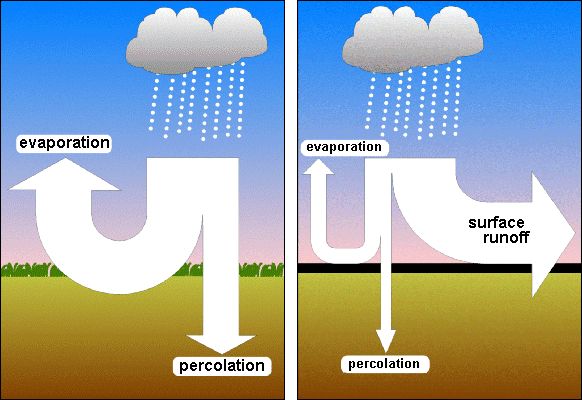Water management and water resource operation oriented to sustainability require precise knowledge about surface runoff, percolation, and groundwater recharge. The Berlin area has limited water resources and balancing the water economy is thus of particular importance. The size of water resources is in disparity to the number of inhabitants, their drinking and potable water needs (non-drinking uses), as well as the amounts of waste water produced.
It is important for the protection of
- bodies of water to be able to estimate the amounts of overland flow (surface runoff) that will be discharged into bodies of water (surface waters). Considerable loads of pollutants are transported by overland flow into bodies of water.
- groundwater to know the percolation capabilities of soils. The transport of materials out of contaminated soils occurs mainly through percolation.
- nature and the care of the landscape to be able to estimate the amount of water available to vegetation from groundwater recharge and from the capillary rise of water from groundwater.
Water introduced to an area by precipitation is classified into water supply parameters according to climatological conditions and other properties of the area. These water balance parameters include evaporation, overland flow (surface runoff), underground (subsurface) flow (percolation and groundwater recharge), and water supply modification. The first parameter to be determined is total runoff, as the sum of surface and subsurface flow.
The general water balance equation states that total runoff is equal to precipitation minus real evaporation. Evaporation is the critical parameter in this calculation. It is influenced under natural conditions primarily by vegetation, climate, and soil.
Real evaporation in an urban area is strongly modified compared to surrounding areas. Construction and sealing in the city clearly reduce evaporation compared to vegetation areas. Plants transpire through their leaves continuously, but the only evaporation from constructions and sealed surfaces comes from the slight amounts of water clinging to them after rainfall. Total runoff in urban areas is greater than in areas of strong vegetation.

